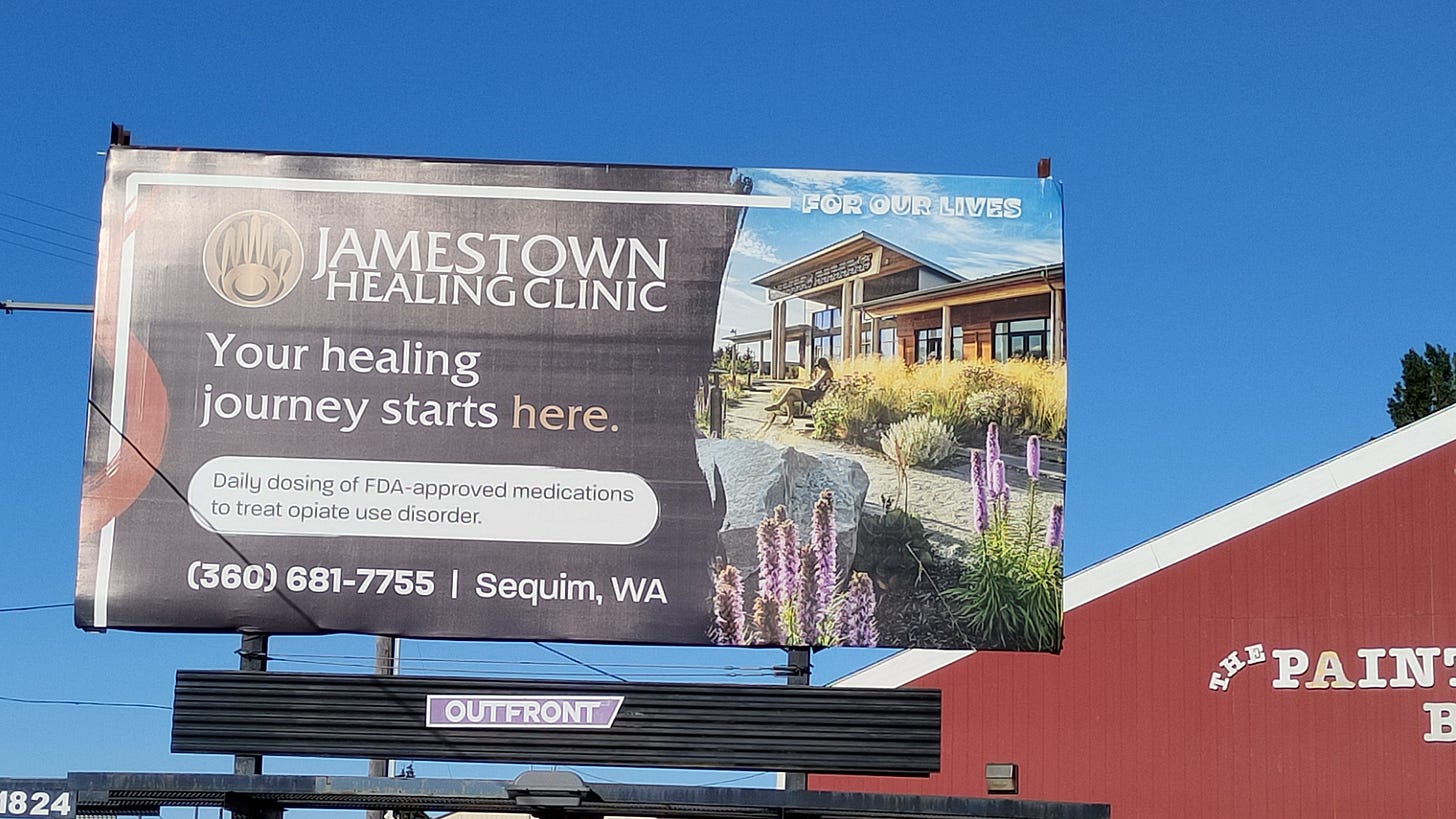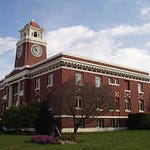A Port Angeles billboard promotes “daily dosing” at the Jamestown Healing Clinic—but behind the comforting words lies a lucrative business model. At $719 per federally funded “encounter,” with patients allowed up to five visits per day, the clinic can generate thousands per person—every single day. Built with taxpayer dollars, the facility’s revenue remains hidden behind tribal sovereignty, leaving the public to wonder: is this about healing lives… or maximizing billable visits?
If you’ve driven eastbound on U.S. Highway 101 just west of Traylor’s in Port Angeles, you’ve likely seen the large billboard:
“For our lives. Jamestown Healing Clinic. Your healing journey starts here. Daily dosing of FDA-approved medications to treat opiate use disorder.”
On its face, the message sounds compassionate. But the wording—and the economics behind it—invite a closer look.
The money behind the message
The Jamestown S’Klallam Tribe receives $719 per encounter for outpatient services related to opiate use disorder treatment, and each patient is allowed five daily encounters, meaning one client can generate over $3,500 in daily revenue. That rate is set by the Indian Health Service (IHS) for all federally recognized Tribes in the Lower 48 states.
These “encounters” include Medicaid-covered visits, and the rate applies to non-Medicare outpatient care. In practice, the clinic bills Medicaid, Medicare, and other federal programs for these services. The funding comes entirely from federal tax dollars—money appropriated to IHS as part of the U.S. government’s trust responsibility to Tribes.
Why “daily” matters
The billboard emphasizes daily dosing of FDA-approved medications like methadone, buprenorphine, or naltrexone. While these medications are widely recognized in public health for reducing opioid-related harm, the “daily” element also has a financial implication:
More visits mean more encounters.
More encounters mean more reimbursements.
At $719 per encounter, even a relatively small number of daily patients could translate into millions annually. Yet despite the fact that taxpayers funded the construction of the Jamestown Healing Clinic, the public cannot see how much revenue it generates from these reimbursements.
A public health service or a business?
The IHS encounter rate system was designed to ensure Tribes could provide care without charging patients directly. In the case of opioid treatment, this has meant creating access to daily medication in a structured, supervised setting.
But when you combine high per-visit reimbursements with daily attendance, the model begins to look less like a traditional medical practice and more like a revenue-driven business. The billboard doesn’t mention recovery milestones, therapy programs, or graduation from treatment—it stresses daily visits.
That leaves the community with questions:
How much revenue does the clinic make from these daily encounters?
What percentage of that funding is reinvested into patient recovery and community prevention efforts?
Should taxpayers have the right to see the numbers for a facility they paid to build?
For now, those answers remain behind the closed doors of a sovereign nation.
Meet me at the fair
Visit the Clallam County Watchdog booth at the fair — all 4 days starting today!
Work your way to Booth #60, behind the carnival near the west entrance. Stop by to say hello, chat about county issues, share a tip, or just connect with fellow community members.












